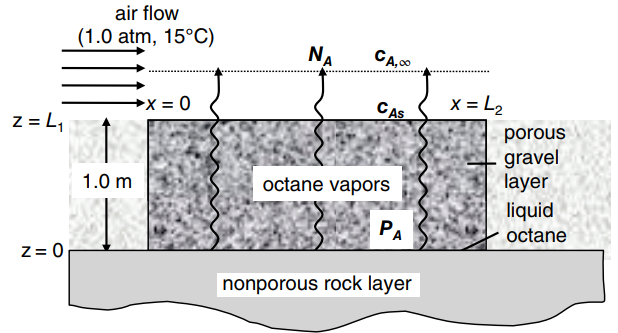Gasoline from an under-storage storage tank leaked down onto an impermeable clay barrier and collected into a
Question:
a. What is the average mole fraction of n-octane vapor at the top surface of the rock layer (yAs = cAs/C) if the air velocity is very low, only 2.0 cm/s? What is the average flux of n-octane vapor emitted to the atmosphere?
b. What would be the average mole fraction of n-octane vapor at the top surface of the rock layer if the air velocity is 50.0 cm/s? What is the average flux of ii-octane vapor?
c. The Biot number associated with a mass-transfer process involving diffusion and convection in series is defined as
where L refers to the path length for molecular diffusion within the porous gravel layer and DAe refers to the diffusion coefficient of species A within this porous medium, which is not the same as the molecular diffusion coefficient as octane vapor in air. Determine the Biot number for parts (a) and (b), and then assess the relative importance of convective mass transfer in determining the n-octane vapor emissions rate.

Step by Step Answer:

Fundamentals Of Momentum Heat And Mass Transfer
ISBN: 9781118947463
6th Edition
Authors: James Welty, Gregory L. Rorrer, David G. Foster





